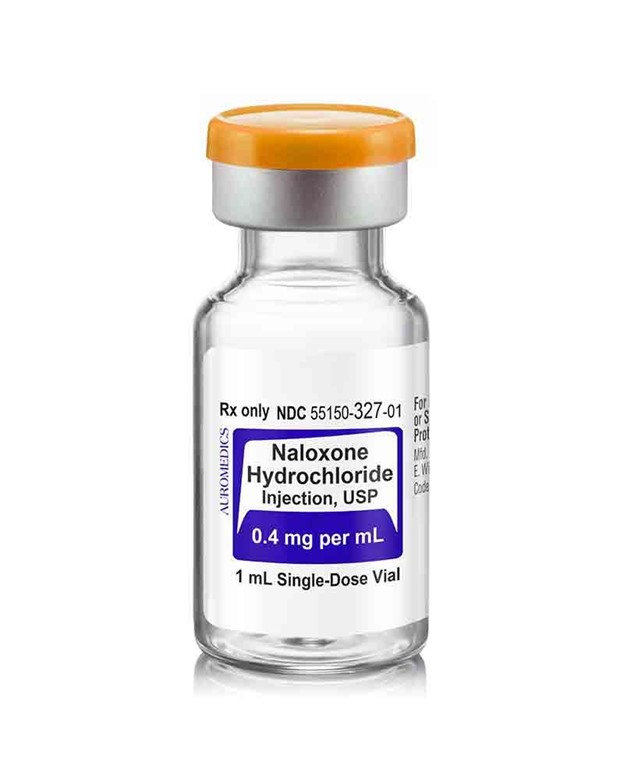The nurse plans to administer naloxone 1 mg. The label of the 10 mL vial indicates that the drug concentration is 0.4 mg/mL. How many mL should the nurse administer?
(Enter numeric value only. If rounding is required, round to the nearest tenth.)
The Correct Answer is ["2.5"]
To find the volume of the solution needed, the nurse can use the formula:
Volume (mL) = Dose (mg) / Concentration (mg/mL)
Substituting the given values, we get:
Volume (mL) = 1 mg / 0.4 mg/mL
Simplifying, we get:
Volume (mL) = 2.5 mL
Therefore, the nurse should administer 2.5 mL of naloxone to give a dose of 1 mg.

Nursing Test Bank
Naxlex Comprehensive Predictor Exams
Related Questions
Correct Answer is ["A","D","E"]
Explanation
Choice A: Lead the client in guided imagery
This is a correct choice because guided imagery is a non-pharmacological intervention that can help reduce pain and anxiety by creating a relaxing mental image for the client. Guided imagery can also lower the heart rate and blood pressure by activating the parasympathetic nervous system.
Choice B: Give a dose of 2.5 mg of Morphine
This is an incorrect choice because morphine is an opioid analgesic that can cause respiratory depression, hypotension, and bradycardia. The client's heart rate is already elevated, which could indicate inadequate pain relief or anxiety. Giving more morphine could worsen the client's condition and mask the underlying cause of the pain.
Choice C: Assist the client to walk around the room
This is an incorrect choice because walking around the room could increase the client's pain and heart rate by stimulating the sympathetic nervous system. The client has already done ambulation exercises with physical therapy at 1200, so there is no need to repeat them at 1400. The client should be allowed to rest in bed and conserve energy.
Choice D: Assess for sources of pain other than the surgical site
This is a correct choice because the nurse should always assess the client holistically and rule out any other potential causes of pain, such as infection, inflammation, or ischemia. The nurse should also check the surgical site for any signs of bleeding, hematoma, or infection. The nurse should use a comprehensive pain assessment tool that includes the location, intensity, quality, duration, frequency, and aggravating and relieving factors of the pain.
Choice E: Consult with the surgeon about the pain level
This is a correct choice because the nurse should collaborate with the surgeon and other members of the health care team to provide optimal pain management for the client. The nurse should report the client's pain score, vital signs, medication administration, and response to interventions. The surgeon may order additional tests or medications to address the cause of the pain and improve the client's comfort.
Correct Answer is A
Explanation
Choice A Reason: This is correct because measuring temperature at regular intervals allows the nurse to monitor fever patterns and evaluate the effectiveness of interventions.
Choice B Reason: This is incorrect because assessing for flushed, warm skin regularly is not a reliable indicator of fever. Skin temperature may vary depending on environmental factors and blood flow.
Choice C Reason: This is incorrect because varying sites for temperature measurement may result in inaccurate readings. Different sites have different normal ranges and may be affected by external factors.
Choice D Reason: This is incorrect because documenting the client's circadian rhythms is not relevant to assessing fever patterns. Circadian rhythms are natural fluctuations in body functions that occur over a 24-hour cycle.
Whether you are a student looking to ace your exams or a practicing nurse seeking to enhance your expertise , our nursing education contents will empower you with the confidence and competence to make a difference in the lives of patients and become a respected leader in the healthcare field.
Visit Naxlex, invest in your future and unlock endless possibilities with our unparalleled nursing education contents today
Report Wrong Answer on the Current Question
Do you disagree with the answer? If yes, what is your expected answer? Explain.
Kindly be descriptive with the issue you are facing.
